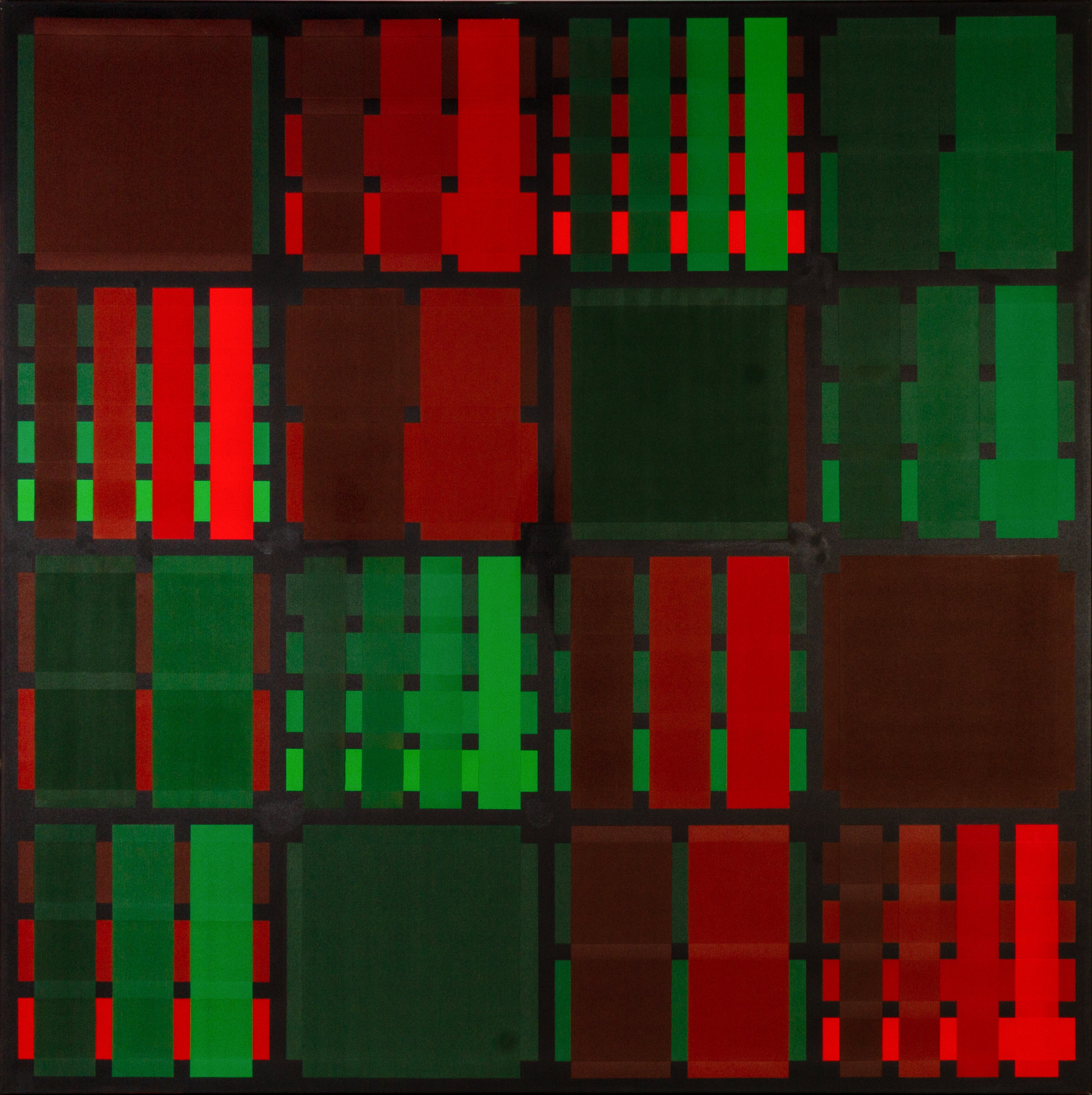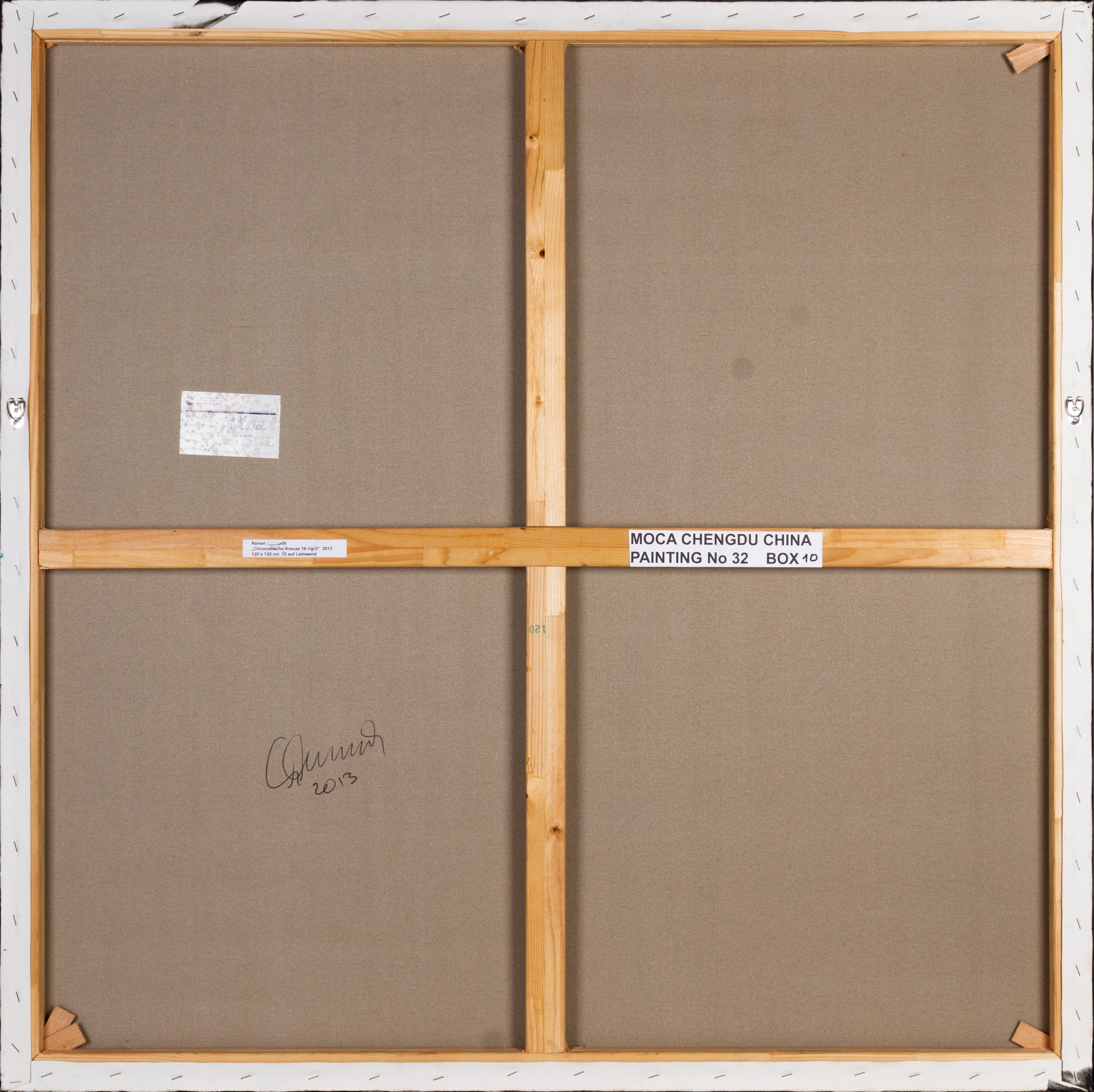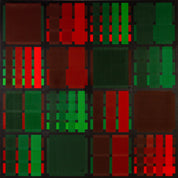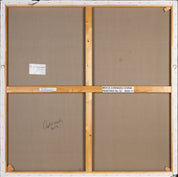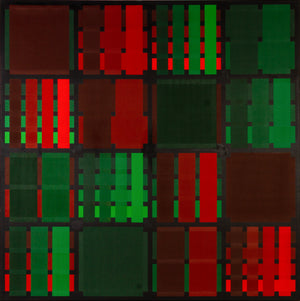Chromatische Kreuze 16 r/gr2
Reiner Kallhardt
Artwork Details
Artwork Description
Title: Chromatische Kreuze 16 r/gr2
Artist: Reiner Kallhardt
Date: 2013
Medium: Oil on canvas
Dimensions: 47.2 x 47.2 in (120 x 120 cm)
1. Artwork Identification
Reiner Kallhardt’s Chromatische Kreuze 16 r/gr2 is a bold composition rooted in a system of chromatic contrast and geometric precision. The work is composed of sixteen modules arranged in a 4 x 4 grid, each containing interlocking red and green square and rectangular forms. The alternating overlays of horizontal bands suggest a rhythmic visual pulse that is both architectural and optical in nature.
2. Artistic Style and Influences
This painting reflects Kallhardt’s dedication to Concrete Art, echoing the discipline and serial strategies of artists such as Richard Paul Lohse and Camille Graeser. However, the visceral chromatic pairing of red and green adds an emotive and energetic dimension to the otherwise systematic matrix. The designation “r/gr” in the Title:—referring to red and green—emphasizes the compositional foundation in color tension and perceptual balance.
3. Historical Context
Completed in 2013, this painting belongs to the artist’s later body of work in which he reexamines color theory through modular grids. At this stage in his career, Kallhardt was increasingly concerned with how structured repetition could be animated by color interaction, a pursuit aligned with renewed interest in optical abstraction within the post-digital painting discourse.
4. Provenance
Provenance documentation can be provided upon contact.
5. Condition and Conservation
The painting is in very good condition. There is no visible surface damage, fading, or loss of pigment. The canvas remains taut and the color fields are vibrant, with crisp transitions between tonal zones.
6. Artistic Significance
Chromatische Kreuze 16 r/gr2 exemplifies Kallhardt’s fusion of rational structure and chromatic dynamism. Through the lens of seriality and color opposition, the work expands the vocabulary of geometric abstraction and underscores Kallhardt’s continued relevance in the field of contemporary Concrete Art. It is a sophisticated addition to any collection focused on post-war European abstraction or systematic painting.

